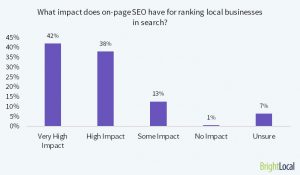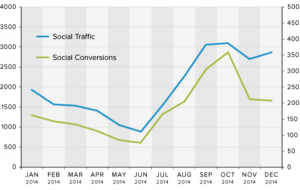Every business must find ways to grow revenue. Usually, companies expand revenue by selling more or finding more to sell. Pretty simple, right?
Wrong.
Companies spend dearly to market products and create branding to differentiate their product benefits, increase market share, and command higher prices – in other words, to sell more. They also create new products or buy companies to expand their offerings – to find more things to sell. Both routes are expensive in terms of time and money.
Even multinational name-brand corporations – from apparel and sporting goods to appliances, automobiles, and hospitality – feel the pressure. Success for these businesses no longer comes solely from offering increasingly commoditized products or relying on benefits supposedly imparted by a brand. To really set themselves apart, companies must offer something extra to make their products more desirable and build brand loyalty.
The problem is, these companies are looking in the wrong place. Rather than spending on marketing or imperceptible product enhancements, only to quickly become commoditized again – they should be looking to the raw asset of the digital age: data.
Data is readily available, basically free, and generated automatically in almost any process. Analyzed data becomes information. Information added to any product creates a superior, more sought-after offering.
Who thinks like this? Software companies. If you want a way to sell more and find more things to sell, think like a software company. It is the fastest and likely least expensive way to extend your product line.
Data has always been a way to sell more. Think about shopping: In a store, you are regularly gathering data to make a smart purchase decision. You ask questions of sales associates, touch things to understand the quality, and read book jackets.
Amazon (NASDAQ: AMZN) was one of the first online retailers to realize the value of data when shopping, and they quickly added data to help your online purchase decisions: Customer reviews provide word-of-mouth information, ratings offer a high-level view of customer satisfaction, and book excerpts let you try before you buy.
When’s the last time you bought something online and didn’t check ratings or reviews? Information has become the lifeblood of e-commerce. But Amazon (along with Yelp, Angie’s List, etc.) is just an example of how to use data to sell more. Everyone from pizza shops to manufacturers are finding ways to drive revenue through data.
Sell More: Domino’s
When you buy one pizza, you might splurge for a decent Neapolitan pie. When you buy for teenagers, sporting events, or birthday parties, you really only have three choices: Papa John’s, Pizza Hut, or Domino’s. They are roughly equivalent in terms of food quality, but Domino’s is the superior product (hold your opinions and just stick with me).
Why? The Pizza Tracker.
The Pizza Tracker lets you follow your pizza from order to prep, to bake, to box, to delivery or ready for pickup. And it is awesome, because time is valuable. You get alerted when it’s time to pick up the pizza. No wasting time or risking your expectations will go unmet.
What did Domino’s need to do to deliver this added value? Use data that already existed and make it available in a catchy web and mobile application. This wasn’t very difficult – a couple of college students could probably have coded it in less than a month. The result: Domino’s offers a better product and sells more. [Full Disclosure: I feed my teenagers Domino’s – please don’t judge me as a parent, they eat a ton.]
Sell More: FedEx
The story of Federal Express, now FedEx (NYSE: FDX), is mandatory case study material at every business school. FedEx had a disruptive idea based on superior supply chain execution and outstanding customer service that delivered on a promise: “When it absolutely, positively has to get there overnight.” FedEx upended the oligopoly of the US Postal Service and United Parcel Service (NYSE: UPS) and put the logistics industry on notice.
Naturally, competition responded. But FedEx innovated again with their package delivery tracking –simple information the company already had in its possession as part of their supply chain system made available to customers. The “product” became more than the shipped item: It included logistical knowledge associated with the delivery service.
With delivery tracking, FedEx set a new bar and differentiated its service – and customers were willing to pay more. While commonplace now, FedEx positioned itself as an innovator and transformed itself from a shipping company to a logistics company – the difference being information.
Find More to Sell: Nike
Nike’s FuelBand is a prime example of not just using data collection to track and improve fitness performance, but also leveraging the power of a networked ecosystem of applications that work together to achieve a common goal: improved health. Nike wisely added data and analytics to its athletics shoe, apparel, and equipment business to bring an additional benefit to consumers. FuelBand tracks customers’ everyday activities and feeds analytics back to them through an ecosystem of apps and partners that include Apple and GPS stalwart Garmin.
In fact, Nike+ – the division that manages its data and apps – is likely more valuable as a fitness platform for app development than manufacturing the FuelBand itself. With its data platform, partners, and app, Nike customers become locked in to an ecosystem of products and information that is so valuable that they pay a premium for its enhanced services. While competitors will certainly match services over time, the advantage that Nike has as the first mover will keep customers and continue to translate into bottom-line profit. Nike no longer only sells apparel: It sells information.
Find More to Sell: Ford
Sure, Ford manufactures cars. But do you know what its second most profitable segment is after North America car sales? Europe? Wrong. Asia? Nope. Africa? Keep trying.
The fact is, it’s the Financial Services segment. That’s right: Ford is basically a bank. The automotive companies figured out nearly a century ago that this sector is one of the easiest ways to make money.
Ford sells you a car and makes money. Ford sells you a loan and makes more money. Ford offers credit pretty much on one piece of information: your credit score. Your credit score is comprised of a few pieces of data including income, debt, and repayment history. This is all data that Ford has about you.
Run that data through an algorithm and voilà: credit. A poor credit score equals higher interest rates. Better credit score equals lower interest rate. And the raw material of data is free, versus selling another car where the raw materials are metal, glass, plastic, leather, carpet, and rubber – all of which is expensive. The profit margin on your loan is likely five times the profit margin on the car. All it takes is a simple financial piece of software.
Changing Our Thinking
Forward-thinking companies are finding new revenue opportunities through data. It starts by fundamentally changing the thought process behind driving profit.
With data as the raw asset, every organization should start thinking of itself as a software company to maximize that (nearly free) asset.
Software companies create tools, applications, or experiences that ultimately help us work more efficiently, communicate and collaborate, and even entertain us (as evidence, the worldwide gaming industry is over 91 billion USD). Businesses must go beyond their core offerings and consider adding information to create superior products that drive customer loyalty and ultimately revenue.
Instead of spending on marketing, examine the data you already have and see how it is relevant to the product you want to enhance. You can go a simple route like Domino’s or do something more sophisticated like Nike. Most of the time the data already exists, but you have to find ways to share it in an easy-to-use fashion so everyone can benefit. Ask your customers what they need and think creatively about how you can use data to satisfy that need.
Also consider how this information is shared with the end user. Is it over the web, on a phone, on a watch? What is essential and what isn’t? The experience is critical. Work hard to get it right. And remember, the experience should be similar across all form factors so there is no confusion when switching from, say, a phone to a computer screen.
Organizations are already looking for ways to use analytics to empower users to easily make smarter decisions. But the demand is also growing from organizations who are looking to add analytics into every aspect of everyone’s day, with the promise of delivering engaging products and services.
Today, everyone expects analytics and information to come with the goods and services they buy. Let’s give people what they want! Bring relevant data to your consumers in an interesting and compelling way they understand and want to use. Create a data experience that makes sense.
Companies that incorporate information into their product will shrink, become niche players, or worse, disappear entirely. It’s time to recognize that you are a software company – even if you may not think it. Use data to create superior products with experiences that customers want and you’ll be a leader.
This article originally appeared in Datanami.
Business & Finance Articles on Business 2 Community(67)







